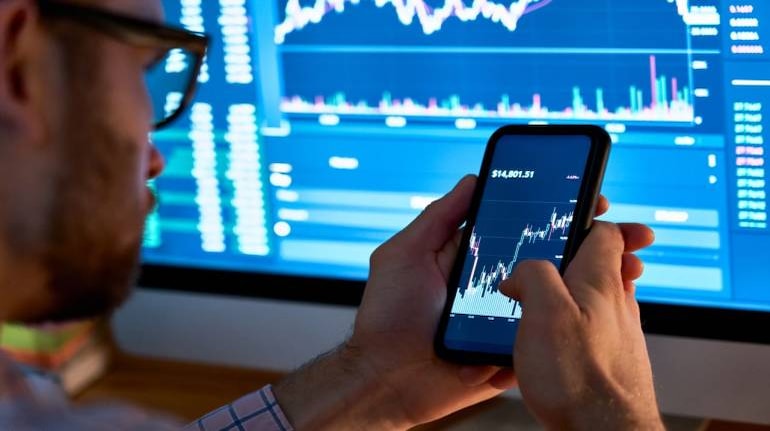



Exchange-traded funds (ETFs) have become a popular investing tool for many investors and have come a long way from when they started their journey in India two decades ago. The universe of ETFs has grown rapidly in the last few years.
The Indian equity markets have been on a steady rise after the Covid hit. Consequently, the ETFs also witnessed record-breaking inflows during the same period.
According to the latest data on the Association of Mutual Funds in India’s (AMFI) website, between December 2021 and September 2022, the assets under management (AUM) of ETFs jumped by around 18% to Rs 4.75 trillion. However, the AUM jumped by 207.43% from March 2020 to September 2022.
From the first ETF listing in 2002, India today has 152 ETFs listed on the National Stock Exchange of India (NSE), offering a huge array of investment choices.
With so many ETFs in the market, the question is: how do you decide which one to choose?
Also read | ETFs, index funds have shortcomings like gaps in pricing and NAV: Usha Thorat
What’s your type?
Start by deciding what sort of ETF you want. Are you interested in stocks of large companies? Bonds? Or want to beat inflation with gold?
Once you know what you’re looking for, you can find the available ETFs in that category.
Most ETFs are focused on the large-cap category since these stocks are liquid and most tracked. And here’s also where ETFs can add value, in terms of competing against their actively-managed, large-cap peers.
Even after you whittle down to the ETF category you prefer, you’ll probably still have several ETFs to choose from. Let’s look at some of the key factors that can help you narrow the list even further and choose the best option.
Tracking error
Most ETFs track indices, meaning they aim to match the performance of a list of stocks or bonds such as the Nifty 50 Index or the BHARAT Bond ETF. Tracking error indicates how closely the returns compare to those of their benchmarks. When the tracking error is close to zero, it indicates that the ETF mirrors the index well. A lower tracking error implies that the ETF has generated returns closer to that offered by the index. Pick an ETF with a lower tracking error but make sure to also take into account how consistent the ETF’s tracking quality is over time.
Also read | Does size of mutual fund schemes matter?
Typically, ETFs that track large-cap indices have the least tracking error since these are the most liquid stocks and it’s easier for ETF fund managers to enter and exit stocks.
Alternatively, to measure tracking error you can also look at the ETF’s most recent factsheet. These reports will generally include the performance of the ETF and the performance of the index on the same chart. Ideally, these two lines should remain very close to one another throughout the fund’s history. If there are significant periods during which the ETF outperforms or underperforms the index, that could be a sign that the ETF manager is not matching the index portfolio.
Cost
One of the best ways to ensure maximum returns is looking for products that have low costs. And one of the most obvious costs of owning an ETF is its expense ratio—the percentage of your investment that goes towards covering the ETF manager’s costs.
The lower the expense ratio, the better. The maximum expense ratio that an ETF can charge, as per rules laid down by capital market regulator Securities and Exchange Board of India (SEBI) is 1 percent.
Also read | Should you go passive in the mid- and small-cap fund space just like in large-caps?
When compared to other fund types, ETFs typically have lower expense ratios, since they are not actively managed. Yet the expense ratio of ETFs vary from fund to fund. When comparing ETFs of the same calibre, you should pick one that entails a lower expense ratio.
Liquidity
When you invest in an ETF, it is important that you can buy and sell it with ease. Therefore, when comparing ETFs, you need to choose ones that have high trading volumes, so you know you can get in and out of your ETF investment without worrying about liquidity.
Moreover, higher liquidity means it will have a lower bid-ask spread. It’s also important to ensure the price of the ETF is close to its net asset value (NAV). If the ETF price is more than the NAV, the ETF is expensive.
What should investors do?
ETFs can be a great investment avenue for every kind of investor. Equity ETFs make perfect sense for beginners who want to invest in stocks but find it difficult. Gold and silver ETFs are beneficial for hedging purposes, while international ETFs are a great way to diversify your portfolio and get exposure to overseas markets with ease.
Discover the latest Business News, Sensex, and Nifty updates. Obtain Personal Finance insights, tax queries, and expert opinions on Moneycontrol or download the Moneycontrol App to stay updated!
Find the best of Al News in one place, specially curated for you every weekend.
Stay on top of the latest tech trends and biggest startup news.